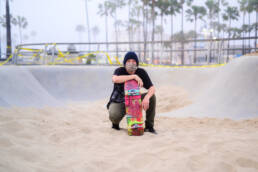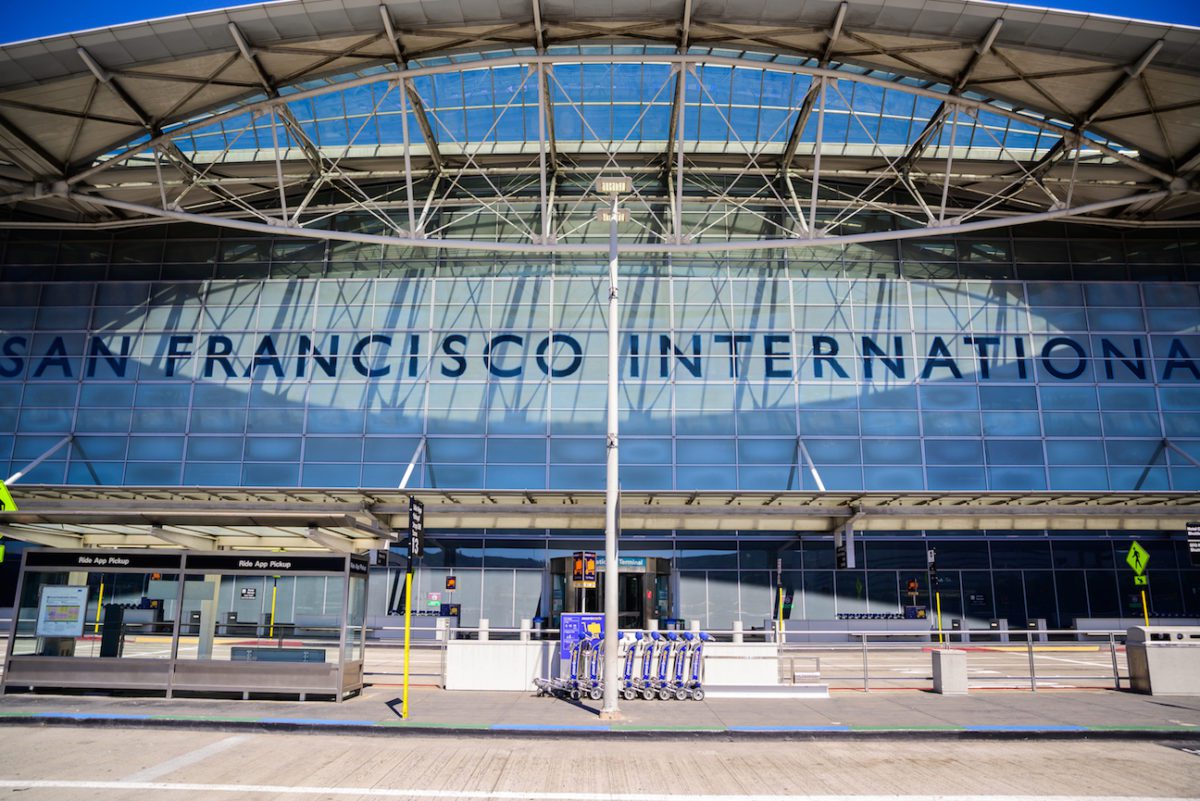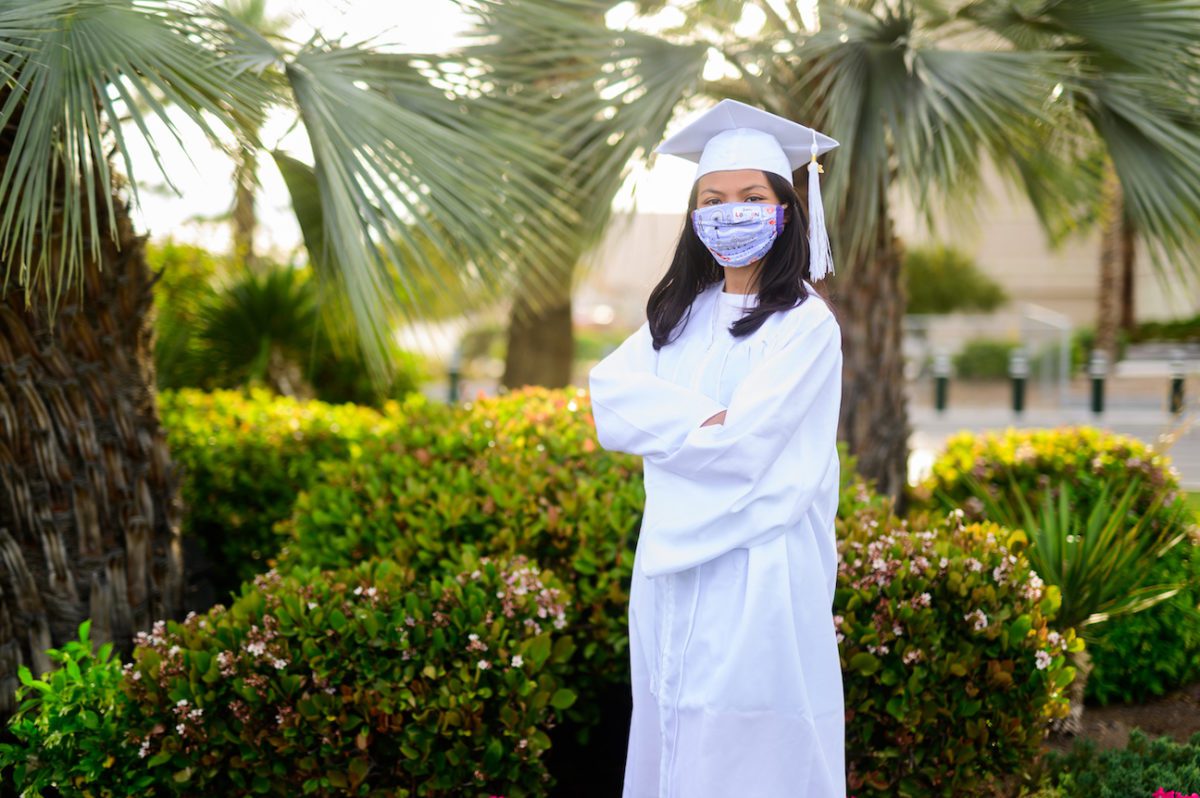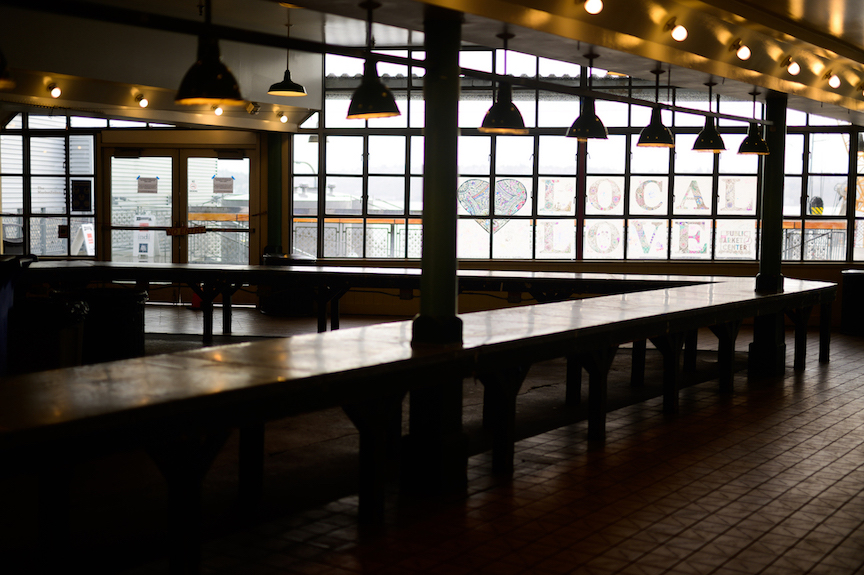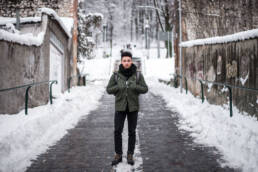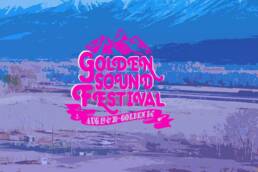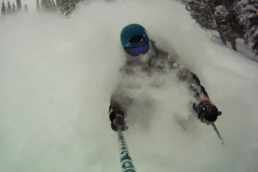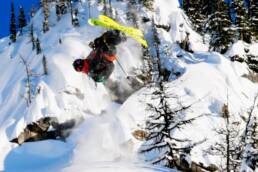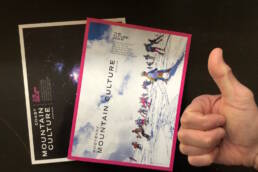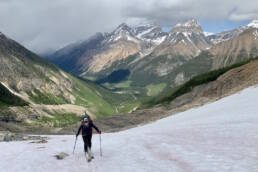National Geographic published photographer Adam Schluter was given unprecedented access to capture iconic moments during the Covid-19 pandemic in Las Vegas, LA, San Francisco and other cities. This is how and why.
Earlier this year we featured photographer Adam Schluter who had just released a book about his travels to 19 countries in which he walked up to strangers to ask for their photograph. That project was an excellent training ground for his next one: approaching random Americans during a global pandemic and asking to photograph them. Since March he has travelled to Las Vegas, Los Angeles, Seattle, San Fransisco and beyond to capture urban landscapes barren of traffic and strangers wearing masks and face shields. We caught up with Adam to ask about how this all came together and what it was like approaching strangers during a pandemic. Below is the project’s summary video by Andrew Jansen and our interview.
Hey Adam, when last we heard you had completed a book about travelling the world and photographing strangers. Tell us about this latest project?
Wow, how strange these times are that that project already feels like a lifetime ago. I had just come back from bringing that project to the Caribbean for five weeks, where I didn’t have a phone and minimal Internet service the whole time, so I had no clue any of this was happening until I landed on my layover in Chicago. I saw a lot of people in masks, started asking and then looked up at the TV to learn about what the heck Covid-19 even was. It felt like a movie moment. I had just gone around the world trying to get close to strangers, have an intimate conversation with them and bring us all a little closer together. So when I saw on the news we were to stay home, stay away from people and quarantine I had a “Holy Shit!” moment. I realized the entire project I had given my life to just disappeared in one second. I went home and had a lot to catch up on so I took it as a sign to slow life down for a bit. But, after a week, the shock had worn off. Two weeks in and I was starting to get depressed. On top of this project, I also travel the majority of the year to stay inspired and couldn’t even do that anymore. After three weeks , I knew I had to do something to get out of the rut I was in.
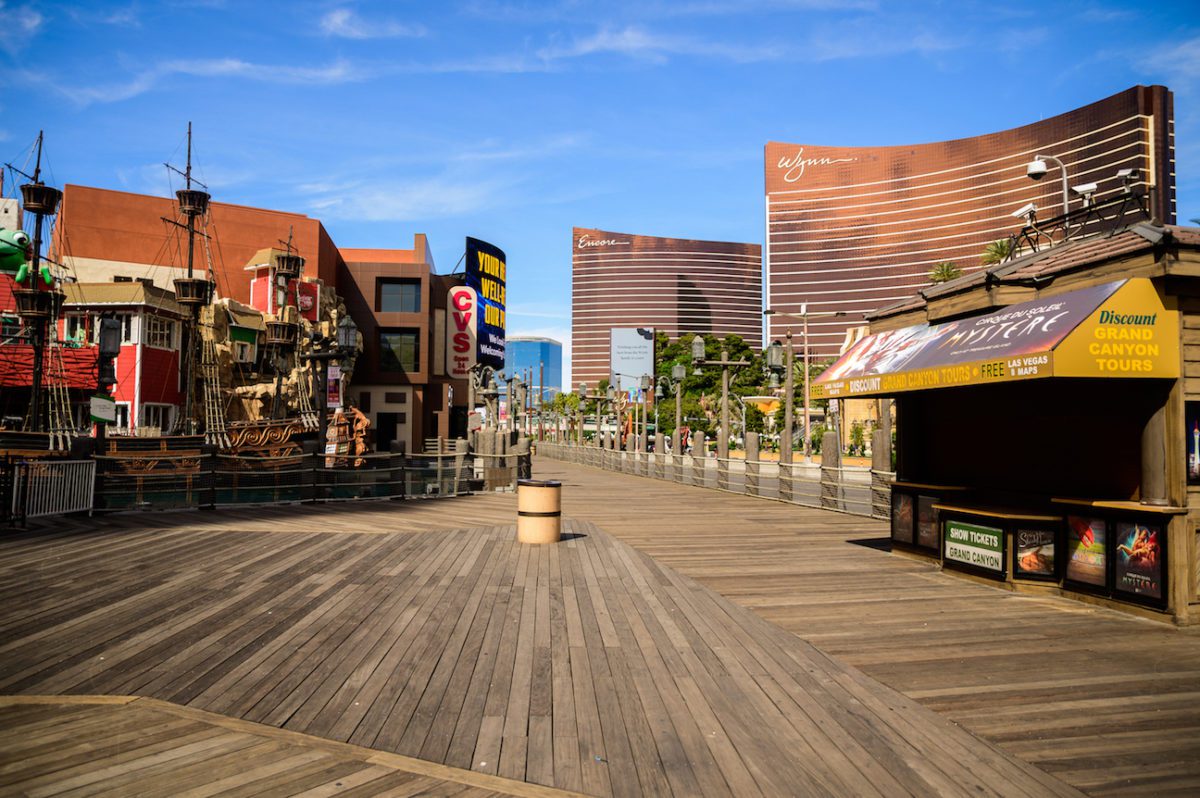
For whatever reason, I couldn’t get Las Vegas out of my mind. Empty sidewalks, empty casinos…a true once-in-a-lifetime situation. So, when I knew I had to go renew my inspiration or keep getting depressed, I just got in my car and started to drive to Las Vegas. When I looked at the route I was taking, I saw I was going through Salt Lake City and instantly thought of an iconic picture with a mormon elder, wearing a mask, standing in the middle of one of their churches. So I went there to get that picture and got an even more incredible one, which you can see at hellofromastranger.com/stories and many more moments came from it. Then I went to Las Vegas. After that I saw I was only four hours away from LA so I had to go to Skid Row, LAX and the Venice Beach skatepark because I’d heard they were filling it with sand. Then I saw I’d be heading back through San Francisco and thought about the Golden Gate Bridge. And SFO airport. So the whole trip just kept building and I ended up driving 3,100 miles in eight days.
What was it like visiting places like LA and Vegas that were so empty?
Las Vegas hit me the hardest. I can’t describe how strange it was to just hear silence on the Las Vegas strip. It was so desolate that people were just riding bikes or walking down Las Vegas boulevard. But here’s the even stranger part, there was almost no people but there an obscene amount of police everywhere. Just sitting there. Blocking the entrances to casinos. Walking on the sidewalks. Riding bicycles up and down the strip. It was a very dystopian feeling. Even stranger, I’d walk around these casinos and never see a single person. But, as soon as I would pull my camera out, security would be there within 30 seconds every single time. And then the Metro Police would arrive, usually in a few minutes from there. So even though it was empty, I knew that I was always being watched.
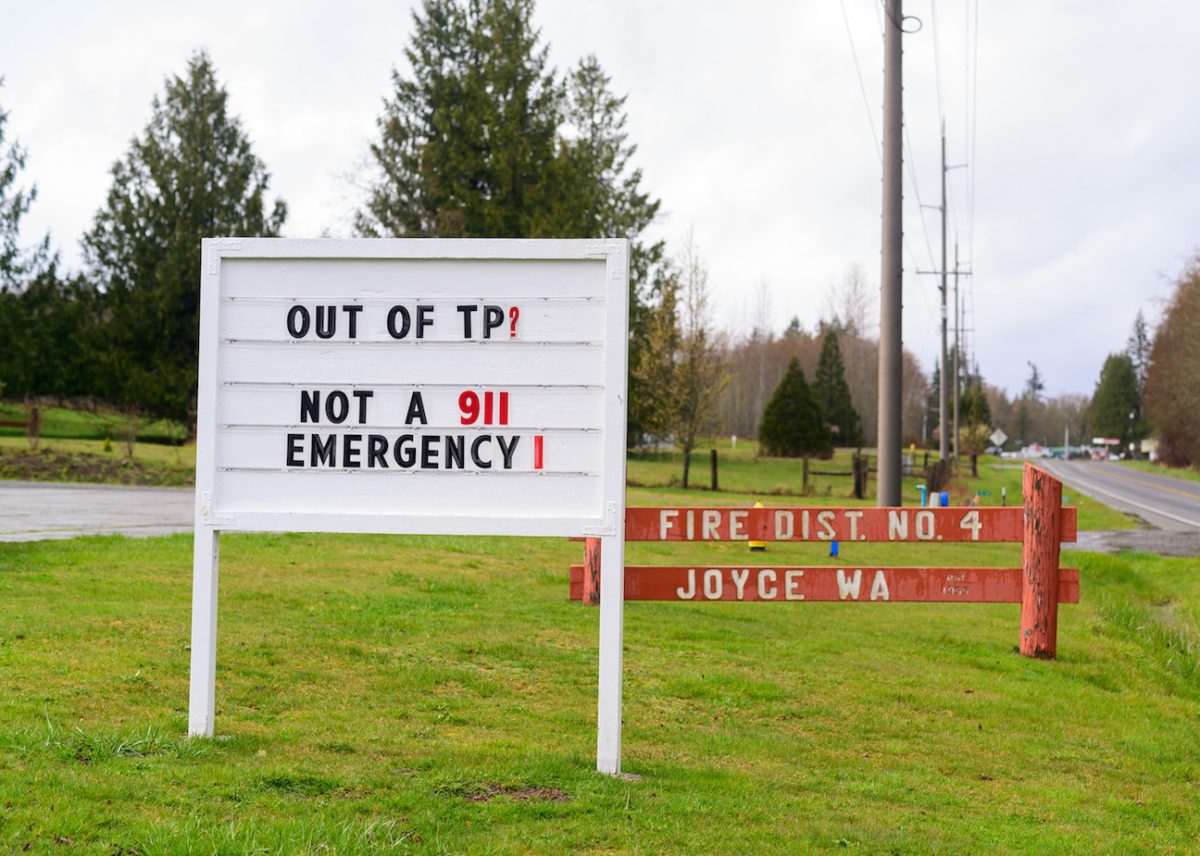
What hit me hardest in LA was that I had to look for people to photograph. I’d go down multiple streets just to find a single person. A place that is normally absolute chaos was now so empty that I could just park my car in the middle of the street and walk around. That was, until I got to Skid Row. Skid Row was still very much itself: over 50,000 people stuck on the streets and left to fend for themselves. I have tried multiple times to photograph Skid Row and always been met with a lot of confrontation and anger from the residents when I did, even though I would really try to connect with them and help. But, this time, it’s like everyone had their guard down and was extra vulnerable, so no one said a word and was receptive to photographs for the first time ever.
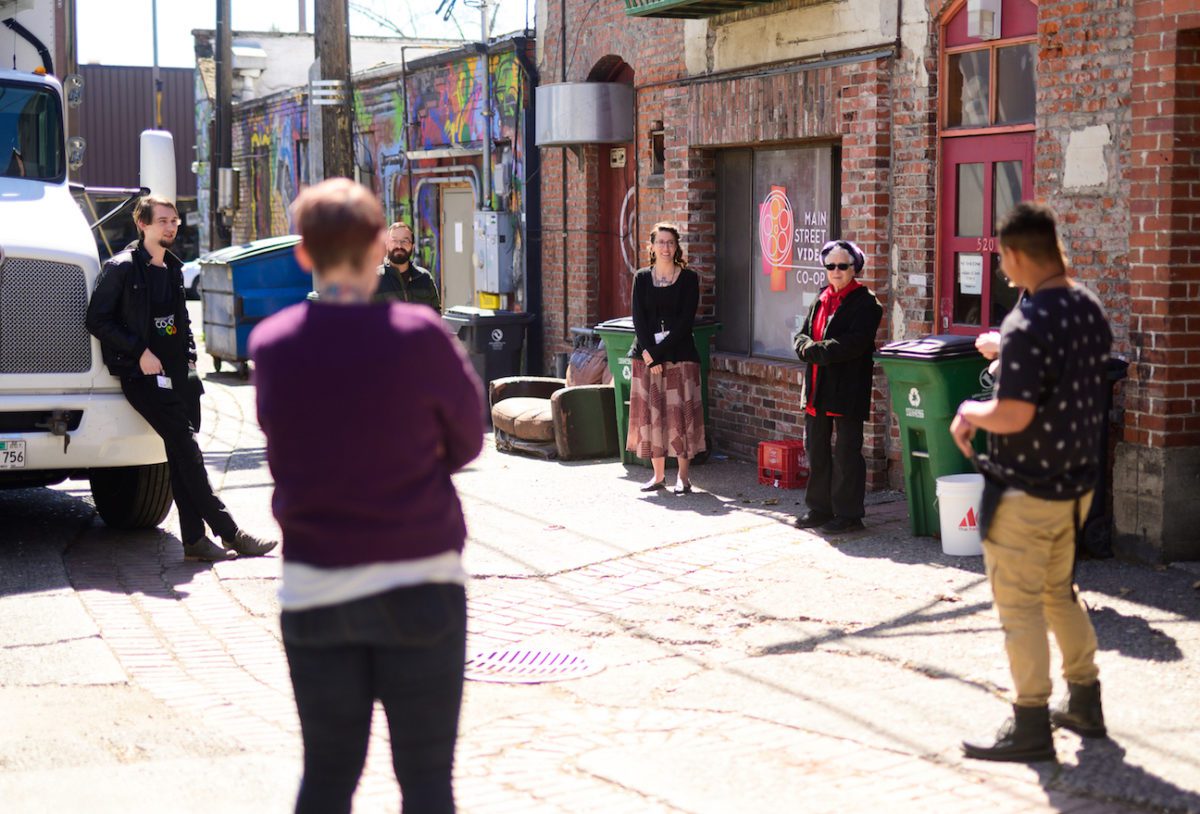
Venice Beach skatepark was filled with sand to prevent locals from using it. This was a very iconic situation because Venice has always been counterculture (at least before it started getting gentrified) so there was a lot of resistance to the police taking away a spot that locals relied on. I spent time with one of the locals, Peck, who told me he had been skating there for 40+ years and never seen anything like it. So everyone was just sitting around it, still holding their skateboards, just waiting until they could use it again. Also, LAX airport was so empty that I was able to park my car in the middle of the departure area and just walk around. Normally you’d get towed in about three seconds if you did that.
How did people first react to your request for a photograph?
Here’s the interesting thing with people’s reactions to the pictures: I knew this would be a very divisive project since many people would tell me I should have just stayed home. But I really felt a strong pull as a photographer and journalist that I had an obligation to photograph this once-in-a-lifetime moment to make sure we remember history so we do our best not to repeat it. So I consulted with medical professionals for if, and how, I could do this project safely. I consulted with the main nurse at SFO airport, in charge of screening all incoming passengers for Covid-19, and she explained that if I always kept a mask and gloves on, in all situations, there was an extremely low possibility of getting it myself or transferring it to anyone else. And of course I had to keep social distancing as much as possible. So I lived in my blue mask and purple gloves. If I wasn’t in my hotel room, I had them on at all times, even in the 37°C heat of Las Vegas. And the Mormon Church. Always. But, what I found was that people were so appreciative that I was taking all these safety precautions that they were very receptive to the idea of talking to me and letting me get their photograph. It almost felt easier to connect with people while wearing a mask than without one. But maybe part of it was people feeling so isolated and they were happy to stop for a conversation.
How has Covid impacted you on a personal level?
That’s a great question As an artist, I really live for these once-in-a-lifetime moments and find that we adjust to them a bit better than people who are used to a schedule or routine. Granted, it took me some time to see the silver lining in it but, once I did, I was completely inspired with the moments that unfolded. It was strange though because I’m used to going to Third World countries and dangerous places around the world to find iconic and interesting moments but now I was travelling in my backyard and seeing something new everyday. The other side is the obvious though: I miss my family and friends and being able to see them anytime. I miss local restaurants and breweries. But mostly I miss not being able to give people a hug! I’m a very close person and it is incredibly strange to have to keep my distance the whole time. I don’t even know how to say goodbye in person sometimes.
What’s next for you?
I photograph weddings in the Northwest in the summertime (thelightcastproject.com) and thankfully, I’ve only had one reschedule though many of them went from 150+ people down to less than 20 to make sure they can still be safe and have them. So I will be photographing weddings through September and then seeing what’s going on with this Covid-19 craziness after that. If things are safe then, I will be heading to NYC to begin filming content and a bit of the show for the Hello From A Stranger project.
To learn more about Adam Schluter’s work, and to see his new book, visit hellofromastranger.com.
Vince Hempsall
Vince Hempsall lives in the beautiful mountain town of Nelson, British Columbia, where he spends his time rock climbing, backcountry skiing and mountain biking (when not working). He is the editor of Kootenay Mountain Culture Magazine and online editor for the Mountain Culture Group.
Related Stories
Golden Sound Festival – August 19 & 20
If you're in the East Kootenays this weekend be sure to check out the Golden Sound Festival, scheduled to go off August…
Fernie Sees 74cms in 24 hours at -19. Nuts.
If you were in Fernie on January 17th, 2012, you were a very lucky, incredibly smart person. While the West Kootenays…
The Third And Final Film Featuring Free Skier Trace Cooke Drops Amid Covid
The third and final film by Ryan Flett Media showcasing Kootenay free skier Trace Cooke has dropped amid the challenges…
Good News Stories In The Time Of Covid
We've all seen the bad news. But what good news stories are happening out there during the Covid-19 global pandemic?…
The New 100-Mile Diet: Adventure in the Time of Covid
This year has been an interesting one for many, including skier Cam Mclellan of Invermere, British Columbia, who writes…


